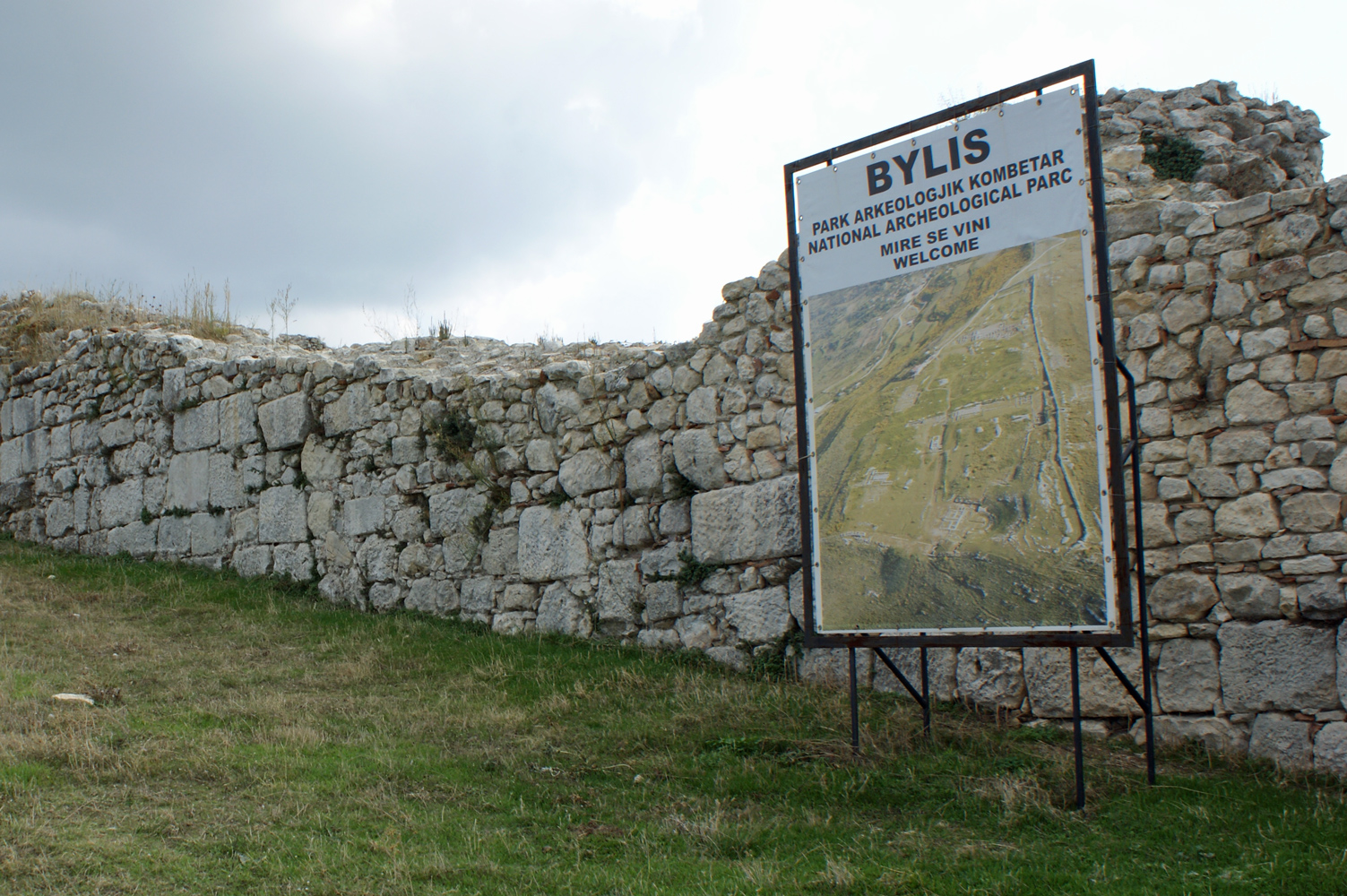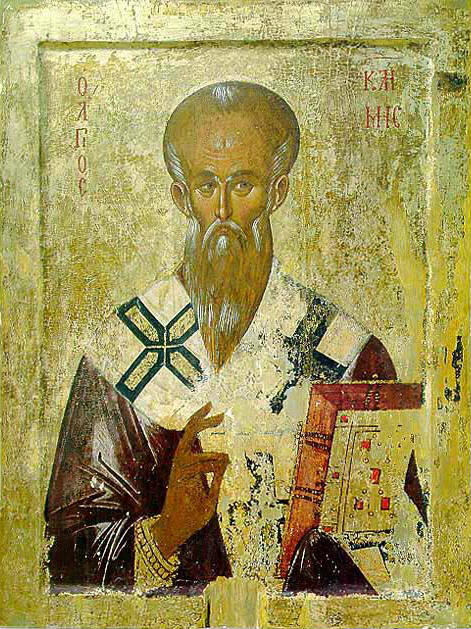|
Ballshi Inscription
The Ballshi inscription is an epigraph from the time of the Bulgarian Prince ('' Knyaz'') Boris I (852–889) testifying to the christianization of Bulgaria. The inscription was unearthed near Ballshi, Albania, in 1918. The Medieval Greek–language Bulgarian inscription covers the upper part of a marble column which also features, in its bottom part, the later Latin epitaph of Norman commander Robert de Montfort who died in 1108, with a cross in the middle of the column. The column was discovered by Austro-Hungarian soldiers during World War I 25 kilometres southwest of the Albanian town of Berat, near Ballshi, among the ruins of a monastery. The Ballshi inscription is a key domestic source giving important information about the Christianization of the Bulgarians and the location of the southwestern border of the First Bulgarian Empire and the region of Kutmichevitsa during the rule of Boris. Saint Clement of Ohrid's concise biography by Demetrios Chomatenos, early 13th-cen ... [...More Info...] [...Related Items...] OR: [Wikipedia] [Google] [Baidu] |
Austria-Hungary
Austria-Hungary, often referred to as the Austro-Hungarian Empire,, the Dual Monarchy, or Austria, was a constitutional monarchy and great power in Central Europe between 1867 and 1918. It was formed with the Austro-Hungarian Compromise of 1867 in the aftermath of the Austro-Prussian War and was dissolved shortly after its defeat in the First World War. Austria-Hungary was ruled by the House of Habsburg and constituted the last phase in the constitutional evolution of the Habsburg monarchy. It was a multinational state and one of Europe's major powers at the time. Austria-Hungary was geographically the second-largest country in Europe after the Russian Empire, at and the third-most populous (after Russia and the German Empire). The Empire built up the fourth-largest machine building industry in the world, after the United States, Germany and the United Kingdom. Austria-Hungary also became the world's third-largest manufacturer and exporter of electric home appliances, ... [...More Info...] [...Related Items...] OR: [Wikipedia] [Google] [Baidu] |
Ten Commandments
The Ten Commandments (Biblical Hebrew עשרת הדברים \ עֲשֶׂרֶת הַדְּבָרִים, ''aséret ha-dvarím'', lit. The Decalogue, The Ten Words, cf. Mishnaic Hebrew עשרת הדיברות \ עֲשֶׂרֶת הַדִּבְּרוֹת, ''aséret ha-dibrót'', lit. The Decalogue, The Ten Words), are a set of Divine law, biblical principles relating to ethics and worship that play a fundamental role in Judaism and Christianity. The text of the Ten Commandments appears twice in the Hebrew Bible: at Book of Exodus, Exodus and Book of Deuteronomy, Deuteronomy . According to the Book of Exodus in the Torah, the Ten Commandments were revealed to Moses at Mount Sinai (Bible), Mount Sinai and inscribed by the finger of God on two Tablets of Stone, tablets of stone kept in the Ark of the Covenant. Scholars disagree about when the Ten Commandments were written and by whom, with some modern scholars suggesting that they were likely modeled on Hittites, Hittite and Mesop ... [...More Info...] [...Related Items...] OR: [Wikipedia] [Google] [Baidu] |
Ohrid
Ohrid ( mk, Охрид ) is a city in North Macedonia and is the seat of the Ohrid Municipality. It is the largest city on Lake Ohrid and the List of cities in North Macedonia, eighth-largest city in the country, with the municipality recording a population of over 42,000 inhabitants as of 2002. Ohrid is known for once having 365 churches, one for each day of the year, and has been referred to as a "Jerusalem of the Balkans"."The Mirror of the Macedonian Spirit, Zlate Petrovski, Sašo Talevski, Napredok, 2004, , page 72: "... and Macedonia in the Cathedral Church St. Sofia in the Macedonian Jerusalem — Ohrid..." The city is rich in picturesque houses and monuments, and tourism is predominant. It is located southwest of Skopje, west of Resen (town), Resen and Bitola. In 1979 and in 1980 respectively, Ohrid and Lake Ohrid were accepted as Cultural and Natural World Heritage Sites by UNESCO. Ohrid is one of only 28 sites that are part of UNESCO's World Heritage that are Cultu ... [...More Info...] [...Related Items...] OR: [Wikipedia] [Google] [Baidu] |
Gllavenica
Ballsh ( sq-definite, Ballshi) is a town and a former municipality in Fier County, southern Albania. At the 2015 local government reform it became a subdivision and the seat of the municipality Mallakastër. It was the seat of the former District of Mallakastër. The population at the 2011 census was 7,657.2011 census results Name It was centre of Malkasra (Turkish of "") kaza in in Yanya Vilayet during Ottoman rule between 1670 and 1912. ...[...More Info...] [...Related Items...] OR: [Wikipedia] [Google] [Baidu] |
Bulgarian Archbishopric Of Ohrid
The Archbishopric of Ohrid, also known as the Bulgarian Archbishopric of Ohrid *T. Kamusella in The Politics of Language and Nationalism in Modern Central Europe, Springer, 2008, p. 276 *Aisling Lyon, Decentralisation and the Management of Ethnic Conflict: Lessons from the Republic of Macedonia, Routledge, 2015, p. 24 *R. Fraser, M. Hammond ed. Books Without Borders, Volume 1: The Cross-National Dimension in Print Culture, Springer, 2008, p. 41 *H. Cox, D. Hupchick, The Palgrave Concise Historical Atlas of Eastern Europe, Springer, 2016p. 67 *J. Rgen Nielsen, Jørgen S. Nielsen ed. Religion, Ethnicity and Contested Nationhood in the Former Ottoman Space, Brill, 2011,p. 234 *John Phillips, Macedonia: Warlords and Rebels in the Balkans, I.B.Tauris, 2004, p. 19 *Frederick F. Anscombe, State, Faith, and Nation in Ottoman and Post-Ottoman Lands, Cambridge University Press, 2014,p. 151 *D. Hupchick, The Balkans: From Constantinople to Communism, Springer, 2002, p. 67 *Chris Kostov, Cont ... [...More Info...] [...Related Items...] OR: [Wikipedia] [Google] [Baidu] |
Demetrios Chomatenos
Demetrios Chomatenos or Chomatianos ( el, Δημήτριος Χωματηνός/Χωματιανός, 13th century), Eastern Orthodox Archbishop of Ohrid from 1216 to 1236, was a Byzantine priest and judge. His comprehensive legal education allowed him to exert substantial influence as judge, arbiter, confessor and advisor to the Byzantine imperial house. This makes him a characteristic representative of a time where judicial power was devolving from the weakened secular authorities to the Church, and also one of the last legal practitioners in full command of Justinian's laws as recovered by the Macedonian legal renaissance. According to the eminent Byzantinist Donald Nicol, Chomatenos' court at Ohrid was a rare centre of stability and law in an uncertain and tumultuous era; "From Kerkyra in the west to Drama in the east, from Dyrrachion in the north to Ioannina and Arta in the south, plaintiffs and defendants brought their problems to the humane and learned Archbishop". Some ... [...More Info...] [...Related Items...] OR: [Wikipedia] [Google] [Baidu] |
Clement Of Ohrid
Saint Clement of Ohrid (Bulgarian, Serbian and Macedonian: Свети Климент Охридски, ; el, Ἅγιος Κλήμης τῆς Ἀχρίδας; sk, svätý Kliment Ochridský; – 916) was one of the first medieval Bulgarian saints, scholar, writer and enlightener of the Slavs. He was one of the most prominent disciples of Saints Cyril and Methodius and is often associated with the creation of the Glagolitic and Cyrillic scripts, especially their popularisation among Christianised Slavs. He was the founder of the Ohrid Literary School and is regarded as a patron of education and language by some Slavic people. He is considered to be the first bishop of the Bulgarian Orthodox Church, one of the Seven Apostles of Bulgarian Orthodox Church since the 10th century, and one of the premier saints of modern Bulgaria. The mission of Saint Clement was the crucial factor which transformed the Slavs in then Kutmichevitsa (present day Macedonia) into Bulgarians. Saint Cle ... [...More Info...] [...Related Items...] OR: [Wikipedia] [Google] [Baidu] |
Kutmichevitsa
Kutmichevitsa ( bg, Кутмичевица) was an administrative region of the Bulgarian Empire during 9th-11th cent., corresponding roughly with the northwestern part of the region of Macedonia and the southern part of Albania, broadly taken to be the area included in the triangle Saloniki-Skopje- Vlora. It had an important impact on the formation, endorsement and development of the Old Church Slavonic and culture. The Debar–Velich diocese of the Bulgarian Orthodox Church was created in Kutmichevitsa whose first bishop between 886 and 893 was Clement of Ohrid, appointed by Knyaz Boris I. Borders To the north Kutmichevitsa reached the river Shkumbin and the ridge Chermenika (Çermenikë) which also divide northern from southern Albania and form the border between the Gheg and Tosk Albanian; to the east and north-east was separated from Macedonia by the Lake Ohrid and Lake Prespa; to the south and south-east bordered the historical region Epirus and to the west reached the pl ... [...More Info...] [...Related Items...] OR: [Wikipedia] [Google] [Baidu] |
First Bulgarian Empire
The First Bulgarian Empire ( cu, блъгарьско цѣсарьствиѥ, blagarysko tsesarystviye; bg, Първо българско царство) was a medieval Bulgar- Slavic and later Bulgarian state that existed in Southeastern Europe between the 7th and 11th centuries AD. It was founded in 680–681 after part of the Bulgars, led by Asparuh, moved south to the northeastern Balkans. There they secured Byzantine recognition of their right to settle south of the Danube by defeatingpossibly with the help of local South Slavic tribesthe Byzantine army led by Constantine IV. During the 9th and 10th century, Bulgaria at the height of its power spread from the Danube Bend to the Black Sea and from the Dnieper River to the Adriatic Sea and became an important power in the region competing with the Byzantine Empire. It became the foremost cultural and spiritual centre of south Slavic Europe throughout most of the Middle Ages. As the state solidified its position in the Balka ... [...More Info...] [...Related Items...] OR: [Wikipedia] [Google] [Baidu] |
Bulgarians
Bulgarians ( bg, българи, Bǎlgari, ) are a nation and South Slavic ethnic group native to Bulgaria and the rest of Southeast Europe. Etymology Bulgarians derive their ethnonym from the Bulgars. Their name is not completely understood and difficult to trace back earlier than the 4th century AD, but it is possibly derived from the Proto-Turkic word ''*bulģha'' ("to mix", "shake", "stir") and its derivative ''*bulgak'' ("revolt", "disorder"). Alternative etymologies include derivation from a compound of Proto-Turkic (Oghuric) ''*bel'' ("five") and ''*gur'' ("arrow" in the sense of "tribe"), a proposed division within the Utigurs or Onogurs ("ten tribes"). Citizenship According to the Art.25 (1) of Constitution of Bulgaria, a Bulgarian citizen shall be anyone born to at least one parent holding a Bulgarian citizenship, or born on the territory of the Republic of Bulgaria, should they not be entitled to any other citizenship by virtue of origin. Bulgarian citizenship sh ... [...More Info...] [...Related Items...] OR: [Wikipedia] [Google] [Baidu] |
Christianization
Christianization ( or Christianisation) is to make Christian; to imbue with Christian principles; to become Christian. It can apply to the conversion of an individual, a practice, a place or a whole society. It began in the Roman Empire, continued through the Middle Ages in Europe, and in the twenty-first century has spread around the globe. Historically, there are four stages of Christianization beginning with individual conversion, followed by the translation of Christian texts into local vernacular language, establishing education and building schools, and finally, social reform that sometimes emerged naturally and sometimes included politics, government, coercion and even force through colonialism. The first countries to make Christianity their state religion were Armenia, Georgia, Ethiopia and Eritrea. In the fourth to fifth centuries, multiple tribes of Germanic barbarians converted to either Arian or orthodox Christianity. The Frankish empire begins during this same per ... [...More Info...] [...Related Items...] OR: [Wikipedia] [Google] [Baidu] |



.jpg)


